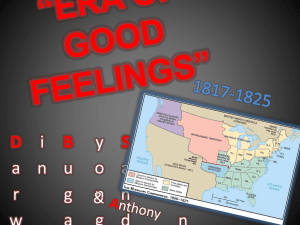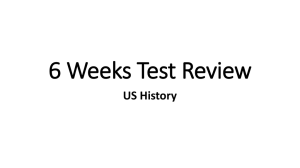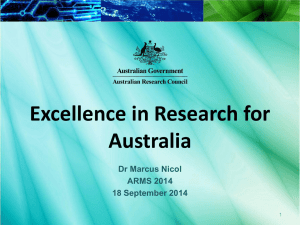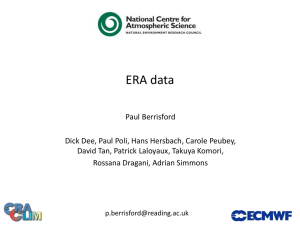The Shaping of American Higher Education: Emergence and Growth
advertisement
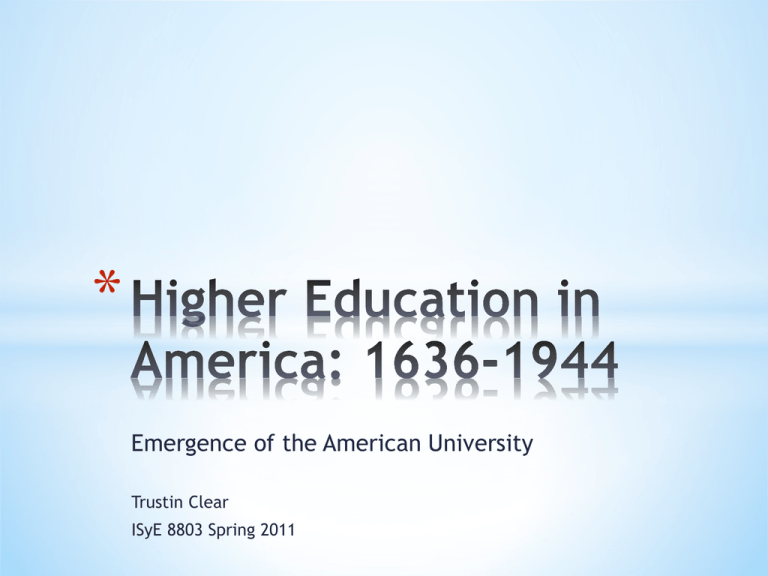
* Emergence of the American University Trustin Clear ISyE 8803 Spring 2011 * This outline is adapted from Arthur Cohen’s The Shaping of American Higher Education: Emergence and Growth of the Contemporary System * Following Cohen’s scheme, the discussion is organized chronologically by era, and topically within eras, addressing Societal Context, Institutions, Students, Faculty, Curriculum, Governance, Finance, and Outcomes * * Following Old World Models * Immigrants came to the New World for a variety of reasons, including the desire for religious freedom, commercial success, and access to land * Socially and culturally, the colonies were decidedly English, and religion was central to colony life * The abundance of land and openness of opportunity led to optimism and the coexistence of many diverse social and religious groups * * Nine colleges were organized in the colonies during this period, modeled on European educational forms * Curriculum and faculty-student relations drawn primarily from the example of church-related institutions * Colonial institutions adopted lay governing boards from Scottish universities, and the curriculum and residential pattern from Cambridge * Emphasis on preparing ministers and civil servants, not professional education * * Few young people in the American colonies went to college, and few careers required it * Colleges were designed to teach discipline, morals, and character, and to take charge of pupils’ lives * Admissions requirements included Latin and Greek, limiting the student population * Enduring patterns of student life, including residency requirements, developed during this period * * Too few faculty to form a critical mass of likeminded colleagues * Institutions employed a combination of tutors and professors, with teaching slow to develop as a profession * Tutors and professors were expected to accept low wages in exchange for the prestige of institutional affiliation, a pattern that would persist * * Curriculum was designed to be practical, but the definition of practicality changes from era to era * All students were required to take a standard set of courses * Curriculum in the colonial colleges was imported from Europe with little modification * As the era progressed, programs of study began to incorporate science and political philosophy, with more emphasis on deductive reasoning * * Instruction based on the authority of classic texts was prevalent throughout the era, but clashed with the adoption of empirical methods * Instruction in Latin and Greek gave way to instruction in English as pedagogy based on experiments and experimental evidence became prominent * The basis of instruction shifted from church doctrine to secular humanism to empiricism, with each orientation justified as practical in its time * * Colleges founded with a combination of public and private control * Institutions overseen by boards or clergymen or magistrates, who appointed a president responsible for day-to-day administration * Board members were often representatives of organized religion, but institutions emphasized interdenominational freedom * As the era progressed, religious influence was replaced by that of businessmen and politicians * Even with this change, faculty never gained more than token representation on institutional boards * * Institutions depended on funding from a variety of sources, including voluntary contributions and governmental bodies * Governments donated land, granted tax advantages, and legislated appropriations * Church groups, private donors, and subscribers provided additional means of support * Tuition and fees were secondary, but necessary for institutions to survive * Colleges in this era were not well endowed, leading to the continuous search for new sources of funding * * Very few graduates were produced during this era, but institutions had a broader impact * Many graduates became influential in the ministry and public service; others had to be flexible in applying the knowledge they gained * College attendance enhanced individual mobility, and played a role in acculturating students * Institutions were concerned primarily with the preservation of knowledge, not its advancement * Institutions conferred prestige on graduates and on host communities * * Proliferating Institutions and Expanding Access * The United States rapidly acquired territory after its establishment, with large numbers of immigrants arriving to take advantage of new opportunities * Church membership increased during this period, with many denominations migrating west and establishing colleges * Growing tension between north and south and calls for social reform, especially the abolition of slavery, dominated the era * * Hundreds of colleges were formed during this era, driven by diffusion of the population, the proliferation of religious denominations, and a general feeling of expansiveness * A lack of regulations made it easy to establish colleges, and the lack of federal educational oversight encouraged the development of a free and open educational market * The proliferation of institutions kept enrollments small and made survival difficult * As interest in science education increased, German universities became models for the college system, but research activities remained limited * * The student base broadened during this era, dramatically increasing in size and beginning to include women and minorities * Enrollment did not keep pace with the population, and colleges faced competition for adequately prepared students * College residential life developed with the proliferation of student societies and the inclusion of women, but segments of the population remained systematically excluded * * Professionalization of faculty progressed rapidly at the beginning of the emergent nation era, marked by the emergence of professorship as a worthy career goal * American college graduates who received additional training in Germany influenced thought on faculty roles in research * Throughout the era, most faculty held outside jobs, due to inadequate college salaries * As faculty members specialized, loyalty to academic disciplines began to supplant loyalty to institutions * * Varied, vocational curricula began to emerge, but not without tension between classical and practical studies * The Yale report of 1828 provided a rationale for retaining classical studies without recourse to religion as a motivating factor * Electives and separate curricular tracks were introduced, but met resistance from traditionalists * Programs often included classical learning in parallel with new offerings * Appeals to the authority of classical sources began to give way to lecture and laboratory instruction, with performance evaluated through written examinations * * The pattern of governance under a nonacademic board of trustees continued in the emergent nation era, both for private and for public colleges * These patterns were well established before the faculty became a self-conscious professional group, limiting the faculty role in institutional management * As the era progressed, clergymen were replaced by mercantile and professional people on boards of trustees, and public institutions often limited the participation of religious figures * * As with governance, financing of colleges followed the patterns established in the colonial era * Colleges relied on private donors and fundraising, with tuition remaining a secondary source of financial support * Governments continued to support institutions by giving tax advantages, land grants, and legislative appropriations * Most institutions had insufficient funds, with de facto support often provided by staff who received little if any compensation * * Outcomes were similar to those in the colonial era, but new effects emerged as well, primarily preparation for emergent professions * Religious revivalism helped spur the establishment of many new colleges, but retarded the adoption of scientific thinking * Institutions dedicated to training engineers emerged during this period, led by the U.S. Military Academy and Rensselaer Polytechnic Institute * By the end of the era, research was growing in importance at leading institutions, but this process was slow to develop * * Emergence of the Research University * Industrialization was critical in promoting the changes observed in the university transformation era * Secondary schools enabled growing enrollment by preparing large numbers of people for college * Higher education grew in practical importance as wealth accumulated and institutions attained a size that allowed specialization * Establishment of a national income tax in 1913 led to the growth of philanthropic foundations, which became important in supporting research and education * * The defining institutional development of this era was the emergence of the university, which combined an undergraduate college with professional schools, graduate departments, and service components * The transformation of colleges into universities reflected the influence of higher education in Germany * The rapid growth of universities was enabled by public funding through the Morrill Act of 1862, as well as by private fortunes amassed in industry * Imitation and competition among universities led to the pursuit of new disciplines and the incorporation of specialized facilities * * The percentage of young people entering college increased as education came to be seen as a means of improving social standing, and as occupational groups began to demand college education for their members * Demand for enrollment at leading institutions exceeded capacity, leading to expanded admissions requirements and standardized admissions testing * Residential student life evolved with the growth of intercollegiate athletics and student social networks * * Faculty roles evolved during the university transformation era through differentiation into faculty ranks, formation of disciplinary departments, and the expansion of academic freedom * Concepts of tenure and sabbatical leave developed as faculty members became more organized and influential * Faculty gained control over department personnel decisions and curricula, but remained underpaid relative to the training required by their positions * * Options for study increased tremendously as departments and faculties grew * Implicit in this change was recognition that the university’s mission was career preparation, organized research, and gaining prestige, not teaching common knowledge or values * Methods of instruction evolved with the growth of enrollment and study options, marked by standardized examinations, the introduction of letter grades, and the influence of philanthropic foundations * * Institutional governance in the university transformation era continued the trend toward secularism * Governance structures shifted in the direction of administrative hierarchies and bureaucratic management systems * The emerging system relied on voluntary agreements, imitation, and competition, rather than legislation * * Institutions continued to be supported by a combination of private donations and tuition * Large private endowments helped new universities support a broad range of activities, and philanthropic foundations encouraged the adoption of higher standards through conditional grants * State support of both public and private institutions continued, but was highly dependent on economic conditions * Federal support extended beyond the Morrill Acts, helping institutions survive the difficulties of the great depression * * The growth of universities resulted in new outcomes for higher education * Emerging universities supported rapid growth in natural science research, and later in agricultural and mechanical areas as well * University education prepared individuals for service in newly reorganized professions, and contributed to the prestige of those professions * Universities became engines of economic growth as increased funding indirectly benefited communities *



